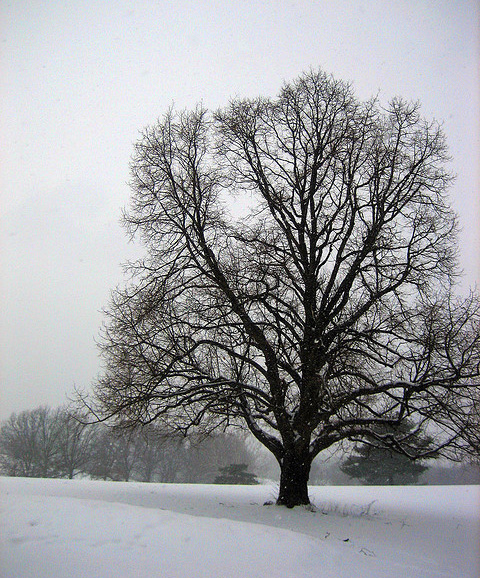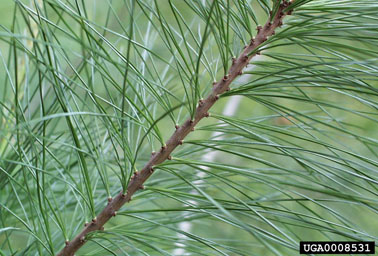Winter is a great time to observe our sleeping friends. With the leaves gone, there is an opportunity to look at other aspects of the trees to determine their species. The most striking is the natural architecture. Each species has a distinctive branching pattern and overall form. We scanned the park together picking out different shapes. You can try it at home: pick two trees around the same size and compare their branching structure. Write down all the things you notice and compare notes with a friend or relative!

The most noticeable difference is, of course, between evergreen and deciduous trees. But how do we tell the evergreens apart? I shared a trick when we came to a particularly massive white pine – you can easily remember that white pines have five needles in each cluster, one for each letter in W-H-I-T-E.

We learned about opposite and alternate bud and twig arrangements and we investigated these characteristics as we approached each deciduous tree. If a tree in this part of Canada has opposite bud and twig arrangement (meaning that these appear directly across from each other rather than being staggered along a branch), it likely belongs to one of four genera: maple (Acer), ash (Fraxinus), dogwood (Cornus) or horsechestnut (Aesculus). Dogwoods are generally smaller trees, while most trees in the horsechestnut genus have a very distinctive hook-shaped branch form. We spent a good amount of time observing the many distinctions between maples and ashes as we made our way along on the snowy trail.

There are many alternate-twigged tree species, each with distinctive characteristics -- such as form, bark and buds – which are used to identify them. Our most exciting find was a native basswood (Tilia americana), identified by a tour participant who knew that its red buds, while similar to those of the often-planted little-leaf linden (Tilia cordata), are larger, as the leaves will also be when they appear in a few months.

If learning about this type of thing interests you, I will be leading the next winter tour with LEAF on March 1 in Trinity Bellwoods Park. This walk will be co-presented with the Friends of Trinity Bellwoods Park, and I know it is going to be an educational good time. To register, click here!
Mark Sherman is an ISA-certified arborist and Backyard Tree Planting Program consultant with LEAF. Our Tree Tours are supported by Ontario Power Generation's Biodiversity Program, York Region and the Ontario Trillium Foundation.
